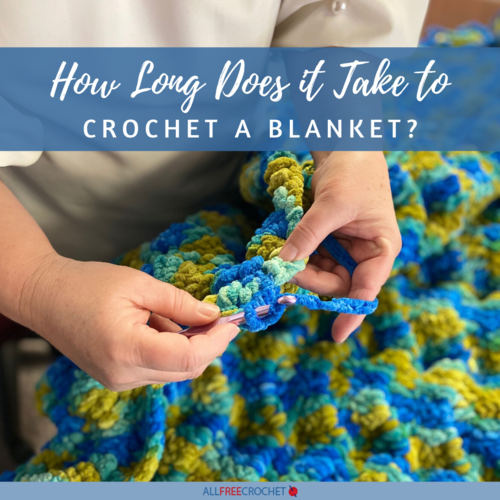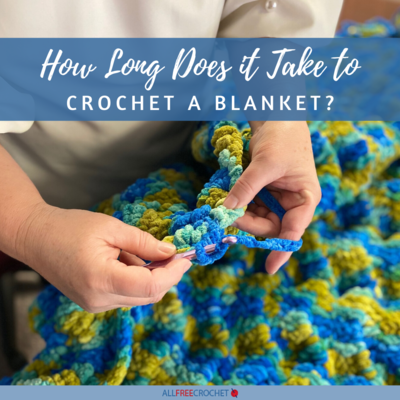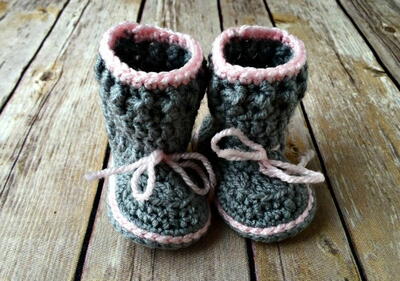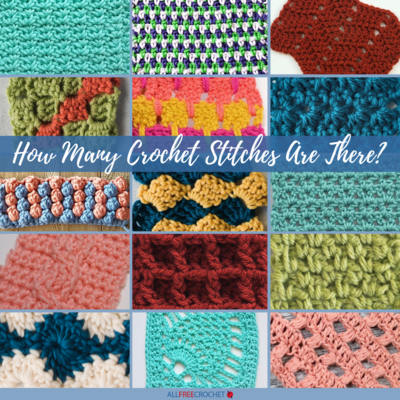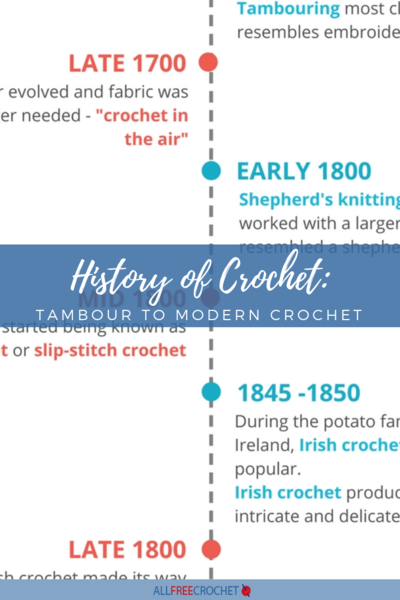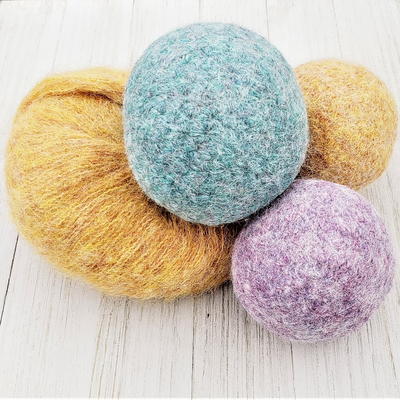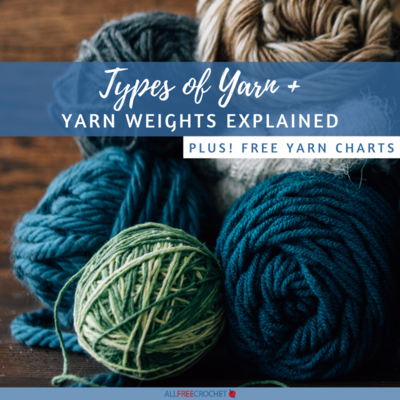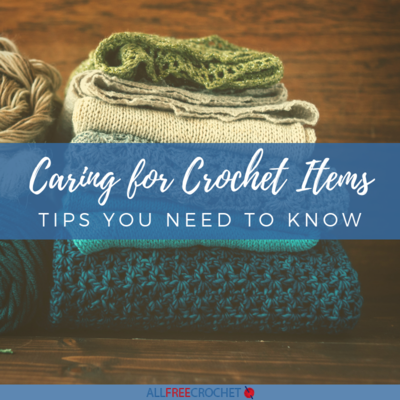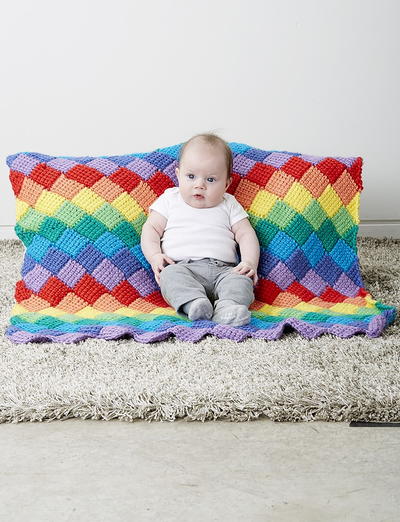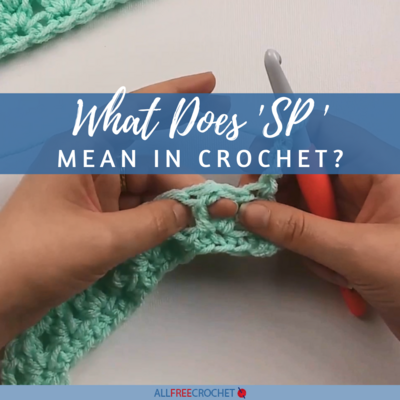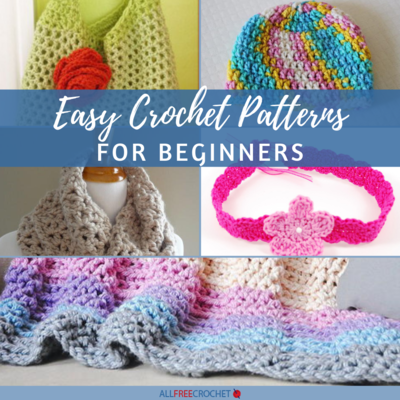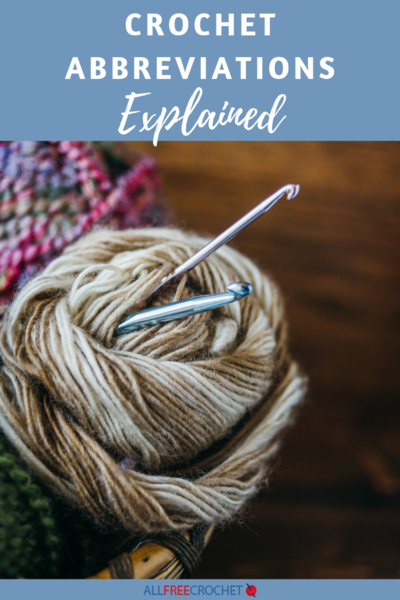How Long Does It Take to Crochet a Blanket?
The speed it takes to crochet a blanket depends on several factors. Learn how to figure it out with this guide!
If you have recently learned to crochet and are ready to begin a blanket, congrats! You may have had the question: How Long Does It Take to Crochet a Blanket? which is common for beginners starting a new type of project, especially when it comes to afghans and blankets.
This article will provide guidance and considerations that will help in establishing a timeline for completion. The recipient of the blanket, time, pattern, setbacks, choosing yarns (colors) and fiber, are all factors to decide prior to starting to crochet your exquisite blanket.
Once you look at these factors and determine the answer, you'll have a much better idea of how long crocheting a blanket takes. We even have a formula to calculate, which makes the process of speed even simpler to figure out.
PLUS! Ever wondered which stitches make for the simplest blankets? See what we think on this page, What is the Easiest Crochet Stitch for a Blanket?
1. Who are you making the crochet blanket for? Consider sizes.
Will the blanket be a gift or is it for yourself? The recipient is an important factor for a few reasons. Knowing this information will help in choosing colors and the size of the blanket. For example, is it a baby blanket, a lap blanket, a granny square blanket, etc.?
Baby blankets usually are crocheted using baby yarns that are soft and delicate. Granny squares usually use a medium weight yarn. The granny squares below were completed with a flower crocheted in the center.
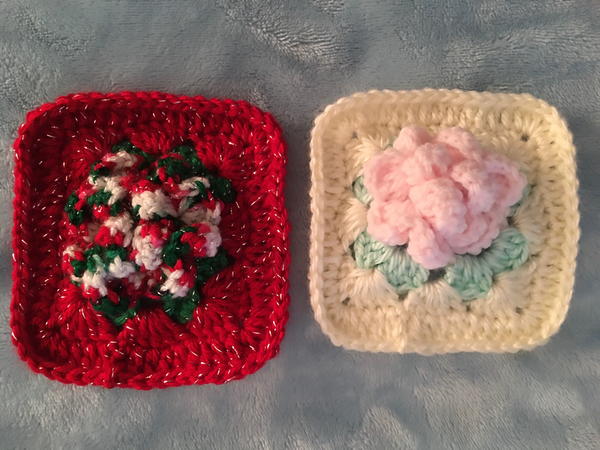
Due to different thicknesses (the fibers) of the yarn, their measurements are varied. The red granny square was created using a sparkle medium-light weight yarn 4.5 x 4.5 inches. The ivory granny square used baby yarn 3.5 x 3.5 inches.
Both squares took the same amount of time to crochet, however, the finished blanket of the ivory granny squares is much smaller than a blanket created of the red squares. The granny squares are then assembled either by sewing or crocheting together to create a blanket. This is the additional time that needs to be included to finish a blanket.
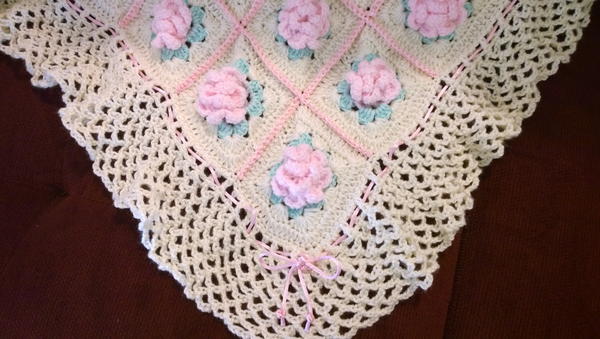
Our friends at AllFreeCrochetAfghanPatterns.com have a helpful page with baby blanket sizes. Read How Big is a Baby Blanket (Crochet)? and check out the printable baby blanket size chart. We also have it for you to download right below.

2. How much time do you have for your crochet blanket?
How much time will you have to devote to crocheting the blanket? Is there a deadline to have a project finished? Prepare to have enough time to complete the project and be flexible with realistic expectations. Crocheting a blanket is relaxing and should not create any stress due to the pressure of a time restraint.
3. Do you have a pattern or have your chosen stitches?
New crocheters will benefit in using a basic stitch such as a double crochet stitch to form multiple rows or by creating a large granny square. Having a pattern that's been tested and is easy to read will help you crochet a blanket faster.
Also, certain stitches are more or less time-consuming. We asked our Facebook audience about their opinions on speed crochet. Read through our page, Which is the Fastest Crochet Stitch?, to see what crocheters had to say.
4. Choosing the yarn for your crochet blanket.
Now for the fun part - choosing the colors, and fiber size of the yarn. When going to the store, and finally deciding on several colors of yarn, I will place them in the shopping cart in the sequence I plan to use them in my project and snap a picture of them. Later, when I begin my project, I know exactly the sequence order for the different colors of yarn that I am crocheting. Granny squares can use 1-4 colors.
5. Choosing the fiber for your crochet blanket.
The fiber is the main component of long strands of substance that are spun together to create the texture of the yarn. The thickness of the yarn will make a difference in the size of the blanket. It is always best to follow the recommended yarn and crochet hook size as indicated in the pattern instructions to create the correct size of the blanket.
If changing to a thicker textured yarn, the size of the crochet hook will also need to be adjusted to adapt to the yarn as the end project will be a much larger blanket. If you would like to crochet a blanket quickly, this method will often work. I crocheted the blanket (see below) in two weeks and it ended up meausring 51 x 74 inches.
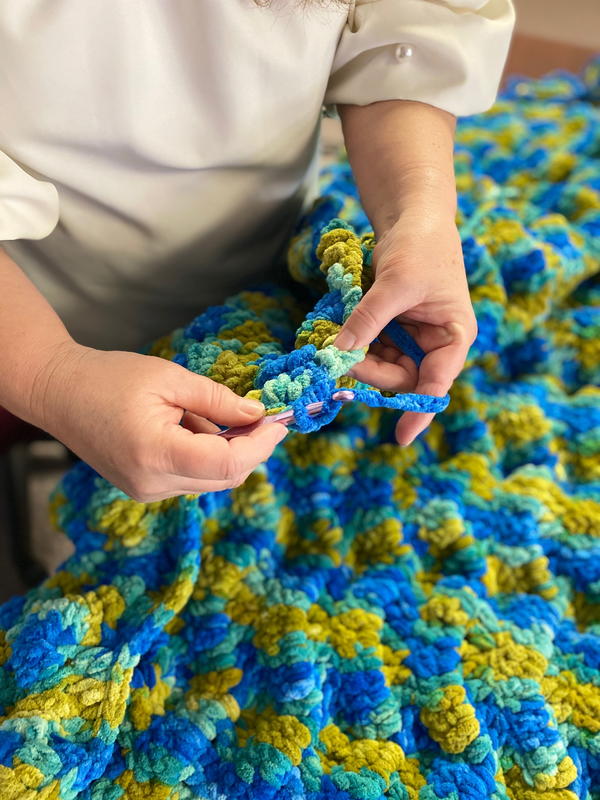
I enjoy choosing yarns by their color names, so I chose “Blue Coconut,” a super bulky chenille yarn 100% polyester that is machine washable and dryable. The blanket consisted of 25 balls of yarn, each 44 yards, a total of 1100 yards. Due to the fiber bulkiness, a “L” size crochet hook was used. The first row measured 4 inches high x 36 rows to equal 51 inches.
To calculate how long it would take to crochet, multiply 1.4 inches x 36 rows to equal 51 inches (total width).
For this blanket, the length of my rows are longer than the width. In addition, divide 51 inches by 14 days = average of 3 rows a day to crochet. I also used treble and shell stitches in the blanket that creates a larger pattern. Moreover, plan that some days will be missed and when there is more time to devote to the project crochet extra rows.
It is most important to choose a pattern that catches your interest to begin and continue to completion. The beginning of the project is always fun, but if the project becomes boring or difficult then you may lose interest. To avoid this choose a blanket pattern that is to your skill level and has interesting colors, fibers and a realistic time frame for completion.
6. Keep setbacks in mind when starting a crochet blanket project.
If you've ever started anything, you know that it rarely takes the amount of time you think it will. Don’t get discouraged. If feeling stressed or make a mistake, set the project aside and have a cup of coffee/tea or go for a walk and then pick up where you left off. Mistakes will occur and happen to the most advanced crocheters. An extra stitch is added, or a stitch is dropped. It is okay and can be fixed. Breathe!
This is also why it's best to allow yourself more time than you think it might take to finish your blanket. If you have a deadline, assure that you will meet it without having to make last-minute changes or getting upset and starting something completely new.
Up Next
Crochet Stitch Directory >>>
Do you consider yourself a fast or slow crocheter?

